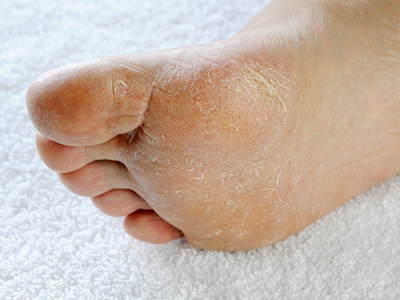


What is it?
You do not have to be a member of a sports team to get athlete’s foot. In fact you don’t even have to play a sport. The condition itself usually results from an overgrowth of a particular fungus organism. In most cases, the areas between the toes and the arch of the foot are most often involved. Athlete’s foot may appear in different stages, each with its own presentation. For instance, the acute stage may have blisters or have intense itching. In addition, there may be maceration between the toes; and occasional drainage. The chronic condition is characterized more by a dry and scaly appearance and rarely itches. There is some confusion as to how this skin condition can be transmitted but at the present time, the consensus of opinion is that there is some type of contagious capacity. In short, you might be able to catch it from the next guy or gal, so watch your barefoot walking! Occasionally, an athlete’s foot condition will become infected and require more extensive therapy. In actuality, the threat of subsequent infection is probably a prime reason for treating more aggressively the earlier stage of the condition. One might think what is really so bad about a little itching between the toes. Well, by itself, probably not a whole lot. But in those cases where that little itching develops into a more involved complication, then we might be facing a more serious problem which might require a more extensive treatment plan.
What causes it?
The treatment for athlete’s foot depends on the severity of the condition. At the first sign of an athlete’s foot condition, I would recommend a short trial period of a medicinal preparation available at the pharmacy in spray or cream varieties. Following several days use, if the condition persists, I would recommend a visit to the foot specialist. If you have a lower stage infection a stronger topical cream or gel might work. Infections between the toes are a little harder to treat because the area stays moist. This might require a gel and possibly occlusion with saran wrap at night. The vesicular form of athele’s foot is the hardest to treat. Sometime oral medication is used to jump start the treatment. The vesicular form is very contagious and you need to protect those around you. Proper diagnosis and treatment is needed to prevent these conditions from becoming more serious.